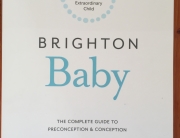 This is fantastic research and reaffirms my belief that natural birth can take time. Often, the birth process can slow down and rest for a while – this doesn’t automatically call for intervention! All of the women in the study experienced active phase arrest which is defined as no cervical change for 2 hours despite adequate uterine contractions. The 67% of women who went on to have a Caesar experienced more complications than the 33% of women who had a vaginal birth. There were no differences in infant outcomes. The researchers concluded that encouraging vaginal birth in the presence of a slowed or resting birth would reduce adverse reactions for the mother and not cause any additional risk for the baby.
This is fantastic research and reaffirms my belief that natural birth can take time. Often, the birth process can slow down and rest for a while – this doesn’t automatically call for intervention! All of the women in the study experienced active phase arrest which is defined as no cervical change for 2 hours despite adequate uterine contractions. The 67% of women who went on to have a Caesar experienced more complications than the 33% of women who had a vaginal birth. There were no differences in infant outcomes. The researchers concluded that encouraging vaginal birth in the presence of a slowed or resting birth would reduce adverse reactions for the mother and not cause any additional risk for the baby.
So, I strongly encourage you to allow birth to take its natural course as long as it is safe for mum and bub. Medical emergencies can occur but in the majority of cases, it is very safe to take your time and embrace your unique birth process.
Perinatal outcomes in the setting of active phase arrest of labor
OBJECTIVE: To examine the association between active phase arrest and perinatal outcomes. METHODS: This was a retrospective cohort study of women with term, singleton, cephalic gestations diagnosed with active phase arrest of labor, defined as no cervical change for 2 hours despite adequate uterine contractions. Women with active phase arrest who underwent a cesarean delivery were compared with those who delivered vaginally, and women who delivered vaginally with active phase arrest were compared with those without active phase arrest. The association between active phase arrest, mode of delivery, and perinatal outcomes was evaluated using univariable and multivariable logistic regression models. RESULTS: We identified 1,014 women with active phase arrest: 33% (335) went on to deliver vaginally, and the rest had cesarean deliveries. Cesarean delivery was associated with an increased risk of chorioamnionitis (adjusted odds ratio [aOR] 3.37, 95% confidence interval [CI] 2.21-5.15), endomyometritis (aOR 48.41, 95% CI 6.61-354), postpartum hemorrhage (aOR 5.18, 95% CI 3.42-7.85), and severe postpartum hemorrhage (aOR 14.97, 95% CI 1.77-126). There were no differences in adverse neonatal outcomes. Among women who delivered vaginally, women with active phase arrest had significantly increased odds of chorioamnionitis (aOR 2.70, 95% CI 1.22-2.36) and shoulder dystocia (aOR 2.37, 95% CI 1.33-4.25). However, there were no differences in the serious sequelae associated with these outcomes, including neonatal sepsis or Erb’s palsy. CONCLUSION: Efforts to achieve vaginal delivery in the setting of active phase arrest may reduce the maternal risks associated with cesarean delivery without additional risk to the neonate. LEVEL OF EVIDENCE: II.
Obstet Gynecol. 2008 Nov;112(5):1109-15.
PMID: 18978113
















